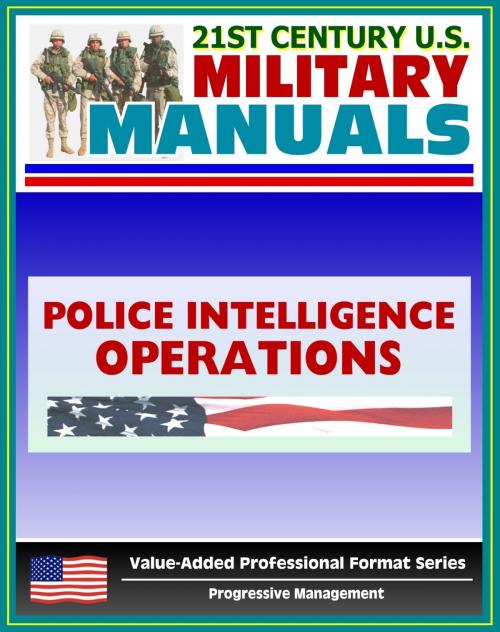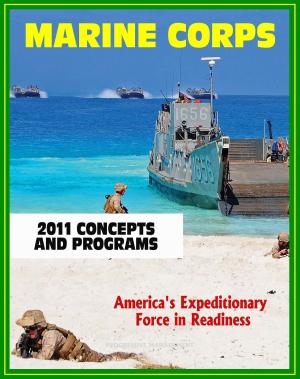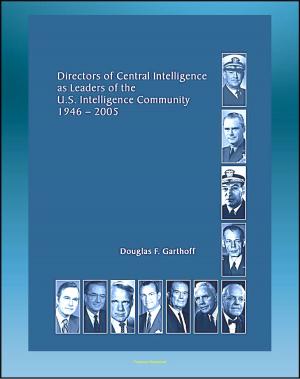21st Century U.S. Military Manuals: Police Intelligence Operations Field Manual - FM 3-19.50 (Value-Added Professional Format Series)
Nonfiction, Social & Cultural Studies, Social Science, Crimes & Criminals, Criminology, History, Military| Author: | Progressive Management | ISBN: | 9781466180048 |
| Publisher: | Progressive Management | Publication: | September 28, 2011 |
| Imprint: | Smashwords Edition | Language: | English |
| Author: | Progressive Management |
| ISBN: | 9781466180048 |
| Publisher: | Progressive Management |
| Publication: | September 28, 2011 |
| Imprint: | Smashwords Edition |
| Language: | English |
Part of our value-added professional format series, the Police Intelligence Operations Field Manual (FM 3-19.50) is the Military Police Corps' manual for police intelligence operations (PIO) doctrine. It describes the fundamentals of PIO; the legal documents and considerations affiliated with PIO; the PIO process; the relationship of PIO to the Army's intelligence process; the introduction of police and prison structures, organized crime, legal systems, investigations, crime-conducive conditions, and enforcement mechanisms and gaps (POLICE)—a tool to assess the criminal dimension and its influence on effects-based operations (EBO); PIO in urban operations (UO) and on installations; the establishment of PIO networks and associated forums and fusion cells to affect gathering police information and criminal intelligence (CRIMINT).
This manual is targeted specifically for the military police battalion staff, the Criminal Investigation Division Command (CID), the director of emergency services (DES), the provost marshal (PM), other military police leaders, and Army law enforcement (ALE) personnel who are responsible for managing and executing the PIO function. ALE includes military police and Department of the Army (DA) police and security guards.
Over the last several years, the senior military police leadership has recognized the value and role that PIO play in bridging the information gap in a commander's situational understanding and force protection (FP) programs. With the events of 11 September 2001 and the initiation of offensive combat actions in Operation Iraqi Freedom (OIF) and Operation Enduring Freedom (OEF), emerging doctrine, and the expanding role the US military is playing in "nation building," there has been a renewed interest in police intelligence efforts and support to installation and maneuver commanders. The military police component addresses this interest through the PIO function, which includes a review of the environment in a holistic approach, analyzing both the criminal threat and the capabilities of existing law enforcement agencies. This review is an assessment of the criminal dimension when considering the civil environment in mission, enemy, terrain and weather, troops and support available, time available, and civil considerations (METT-TC).
PIO are a military police function that supports, enhances, and contributes to a commander's situational understanding and battlefield visualization and FP programs by portraying the relevant criminal threat and friendly information, which may affect his operational and tactical environment. They are a function (consisting of systems, processes, and tools) that capitalizes on military police capabilities to analyze police information and develop criminal intelligence through the integration and employment of ALE assets and other police organizations.
This field manual has been converted for accurate flowing-text e-book format reproduction.
As a bonus, this reproduction includes FM-1, The Army Field Manual, a capstone manual containing the vision for the Army - sold separately for $5.99. FM 1 establishes the fundamental principles for employing Landpower. The most important of these are the Army's operational concept and the fundamentals that support it. They form the foundation for all Army doctrine. All Soldiers should understand and internalize them. FM 1 describes the American profession of arms, the Army's place in it, and what it means to be a professional Soldier.
This is a privately authored news service and educational publication of Progressive Management.
Part of our value-added professional format series, the Police Intelligence Operations Field Manual (FM 3-19.50) is the Military Police Corps' manual for police intelligence operations (PIO) doctrine. It describes the fundamentals of PIO; the legal documents and considerations affiliated with PIO; the PIO process; the relationship of PIO to the Army's intelligence process; the introduction of police and prison structures, organized crime, legal systems, investigations, crime-conducive conditions, and enforcement mechanisms and gaps (POLICE)—a tool to assess the criminal dimension and its influence on effects-based operations (EBO); PIO in urban operations (UO) and on installations; the establishment of PIO networks and associated forums and fusion cells to affect gathering police information and criminal intelligence (CRIMINT).
This manual is targeted specifically for the military police battalion staff, the Criminal Investigation Division Command (CID), the director of emergency services (DES), the provost marshal (PM), other military police leaders, and Army law enforcement (ALE) personnel who are responsible for managing and executing the PIO function. ALE includes military police and Department of the Army (DA) police and security guards.
Over the last several years, the senior military police leadership has recognized the value and role that PIO play in bridging the information gap in a commander's situational understanding and force protection (FP) programs. With the events of 11 September 2001 and the initiation of offensive combat actions in Operation Iraqi Freedom (OIF) and Operation Enduring Freedom (OEF), emerging doctrine, and the expanding role the US military is playing in "nation building," there has been a renewed interest in police intelligence efforts and support to installation and maneuver commanders. The military police component addresses this interest through the PIO function, which includes a review of the environment in a holistic approach, analyzing both the criminal threat and the capabilities of existing law enforcement agencies. This review is an assessment of the criminal dimension when considering the civil environment in mission, enemy, terrain and weather, troops and support available, time available, and civil considerations (METT-TC).
PIO are a military police function that supports, enhances, and contributes to a commander's situational understanding and battlefield visualization and FP programs by portraying the relevant criminal threat and friendly information, which may affect his operational and tactical environment. They are a function (consisting of systems, processes, and tools) that capitalizes on military police capabilities to analyze police information and develop criminal intelligence through the integration and employment of ALE assets and other police organizations.
This field manual has been converted for accurate flowing-text e-book format reproduction.
As a bonus, this reproduction includes FM-1, The Army Field Manual, a capstone manual containing the vision for the Army - sold separately for $5.99. FM 1 establishes the fundamental principles for employing Landpower. The most important of these are the Army's operational concept and the fundamentals that support it. They form the foundation for all Army doctrine. All Soldiers should understand and internalize them. FM 1 describes the American profession of arms, the Army's place in it, and what it means to be a professional Soldier.
This is a privately authored news service and educational publication of Progressive Management.















